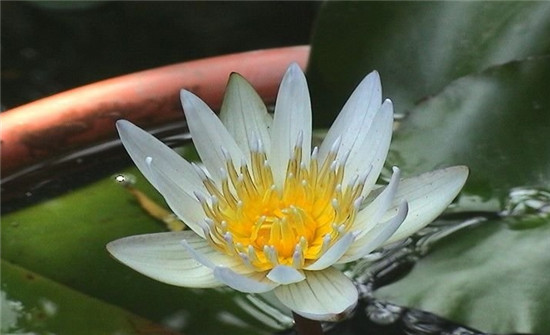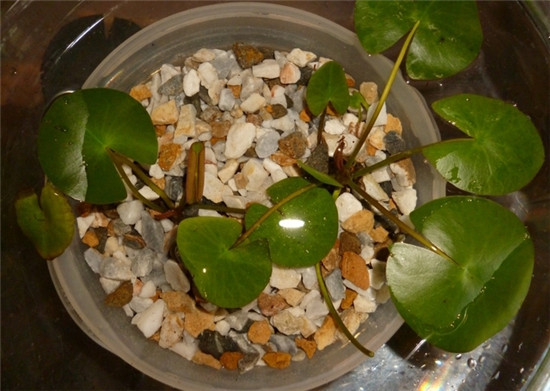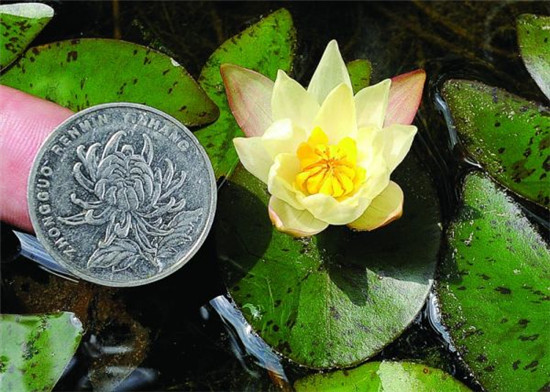Notes on the cultivation of mini water lilies at home
Mini water lilies are miniature versions of water lilies. The most commonly used places with relatively small planting area are mini water lilies. What are the planting methods of mini water lilies? let's take a look at them.

Basic information about mini water lilies:
Water lilies are among the most valuable aquatic flowers, and their appearance is similar to that of lotus flowers, except that the leaves and flowers of water lilies protrude from the water surface, while the leaves and flowers of water lilies float on the surface, and water lilies are known as "sleeping beauties in flowers" because of their day and night curls. it is also used more and more in the process of making water plants. For families or places with small acreage, planting water lilies needs to choose a good variety, and the more suitable one is the mini water lilies.
Mini water lilies, also known as "water lilies", are perennial aquatic plants with slender and beautiful petioles and strong cold tolerance. With a little protection in Northeast China, they can survive the winter safely. Mini water lilies have horizontal rhizomes or erect tubers, short and thick. The leaves are tufted, floating on the water, thick and glossy, round or oval in shape, dark green adaxially and dark purple or purplish red on the back. Flowers and colors vary greatly from variety to variety, bright and beautiful.

Now we will plant water lilies:
First, the flowerpot: try to choose the opening outward, the opening outward leaves will be better than the inward leaves, the wider the pot mouth, the larger the flowers (which has little to do with the size of the pot bottom). The depth of the flowerpot affects the flowering interval, and the deeper the interval is, the longer the interval is.
Second, soil: try to choose soil with high viscosity, such as clay and Yangmingshan soil.
Third, then put a little long-acting fertilizer or root fertilizer at the bottom of the pot (too much will rot the roots), and then put about 1 big 4-1 root in the flowerpot and press it, then bury the bulb bud point upward into the soil, the corm will be buried deep, the flowering interval will be longer but larger, and the shallow interval will be shorter and smaller. After planting, move to a place with plenty of light, fill up the water, and wait for the long leaves to blossom (too many leaves can be trimmed).

4. if you want to plant more than two bulbs together, different from other flowers, two bulbs should be planted next to each other, because if you plant separately, when the stronger leaf covers the weaker bud, the weaker one will be killed. In addition, if you want to plant together, it is better to be of the same species or the same color, because the dark color system (such as purple, blue) will be stronger than the light color system (white, yellow) Remember!
Fifth, after flowering, the flowers can be cut off and inserted (except the lotus). The life span of the flowers is about 3-6 days. On the first day, the flowers will be more straight, and then they will bend more and more until they bend into the water. If the flowers are cut down and inserted, the flowering interval will be shortened, and the interval will be longer if you let it go.
Sixth, add fertilizer: about every one and a half to two and a half months, add long-acting fertilizer or root fertilizer about 3-5 cm away from the bulb, but do not add it after the end of September, because the water lilies will also enter the dormant period and fatten up every one and a half months. Instead, it will cause rotting roots.
7. After entering autumn and winter, water lilies will also enter the dormancy period with the drop of temperature, and it is best not to touch it at this time. Only when there is little water, the dormancy period of varieties with spots on their leaves will be longer than those without spots, and the light color system will be longer than the dark color one.

Five points for keeping mini water lilies at home
First, completely water-raised water lilies are very simple to put the roots directly in the water. Aquaculture with nutrient solution can grow normally!
Second, if the soil is added and selected, the impurities in the soil can be picked out: water lilies are easy to breed, and the soil has no special requirements for general soil, because soil and water mixed culture soil can naturally form silt when soaked in water for a long time. Of course, it is best if there is ready-made mud / pond mud.
Third, appropriate shallow planting: if the soil is buried with 2CM covering soil on the rhizome, it is easy to bury it too deep, which is not conducive to early growth and rapid development.
Fourth, adequate light: water lilies like a climate with plenty of sunshine, warm and humid, and good ventilation. The water lilies cultivated in pots are placed in a position with sufficient light to receive full light. If you can't see the sun for a long time in the house, it's not a big problem, but compared with the growth rate of water lilies with plenty of sunshine, flowering will be somewhat different!
Fifth, pruning withered leaves: in the high temperature season, we should pay attention to keep the basin water clean and cut off the dead leaves, petioles and pedicels in time after flowering, so as to prevent the consumption of nutrients and keep the plants beautiful.
These are all the points for attention of mini water lilies that I have summarized for you. I hope this article can help you. Please continue to follow us.
Prevent the consumption of nutrients and keep the plant beautiful.
These are all the points for attention of mini water lilies that I have summarized for you. I hope this article can help you. Please continue to follow us.
Related
- Wuhan Hospital Iron Tree Blooming Result Was Instantly Frightened by the Gardener Master
- Which variety of camellia is the most fragrant and best? Which one do you like best?
- What is the small blue coat, the breeding methods and matters needing attention of the succulent plant
- Dormancy time and maintenance management of succulent plants during dormancy
- Minas succulent how to raise, Minas succulent plant pictures
- What are the varieties of winter succulent plants
- How to raise succulent plants in twelve rolls? let's take a look at some experience of breeding twelve rolls.
- Attention should be paid to water control for succulent plants during dormant period (winter and summer)
- Watering experience of twelve rolls of succulent plants
- Techniques for fertilizing succulent plants. An article will let you know how to fertilize succulent plants.



